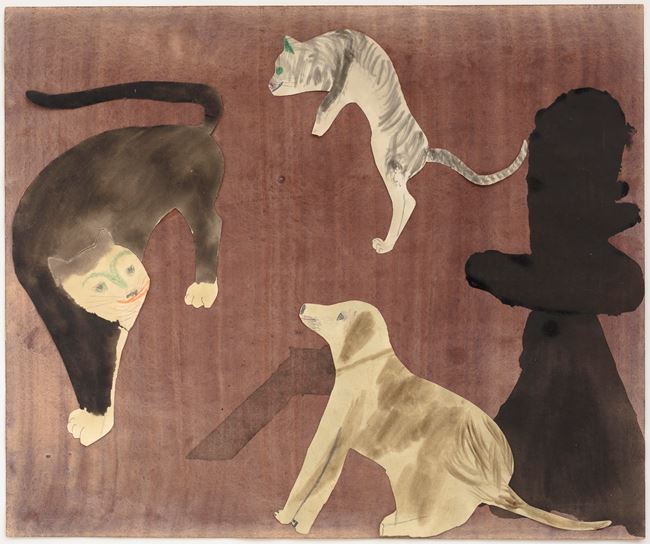license: apache-2.0
tags:
- image-classification
- vision
datasets:
- cats_vs_dogs
metrics:
- accuracy
model-index:
- name: convnext-base-224-22k-1k-orig-cats-vs-dogs
results:
- task:
name: Image Classification
type: image-classification
dataset:
name: cats_vs_dogs
type: cats_vs_dogs
args: default
metrics:
- name: Accuracy
type: accuracy
value: 0.9973333333333333
convnext-base-224-22k-1k-orig-cats-vs-dogs
This model is a fine-tuned version of facebook/convnext-base-224-22k-1k on the cats_vs_dogs dataset. It achieves the following results on the evaluation set:
- Loss: 0.0103
- Accuracy: 0.9973

Jockum Nordström, Cat Dog Cat, 2016
Model description
The "Roaring 20s" of visual recognition began with the introduction of Vision Transformers (ViTs), which quickly superseded ConvNets as the state-of-the-art image classification model. A vanilla ViT, on the other hand, faces difficulties when applied to general computer vision tasks such as object detection and semantic segmentation. It is the hierarchical Transformers (e.g., Swin Transformers) that reintroduced several ConvNet priors, making Transformers practically viable as a generic vision backbone and demonstrating remarkable performance on a wide variety of vision tasks. However, the effectiveness of such hybrid approaches is still largely credited to the intrinsic superiority of Transformers, rather than the inherent inductive biases of convolutions. In this work, we reexamine the design spaces and test the limits of what a pure ConvNet can achieve. We gradually "modernize" a standard ResNet toward the design of a vision Transformer, and discover several key components that contribute to the performance difference along the way. The outcome of this exploration is a family of pure ConvNet models dubbed ConvNeXt. Constructed entirely from standard ConvNet modules, ConvNeXts compete favorably with Transformers in terms of accuracy and scalability, achieving 87.8% ImageNet top-1 accuracy and outperforming Swin Transformers on COCO detection and ADE20K segmentation, while maintaining the simplicity and efficiency of standard ConvNets.
Training hyperparameters
The following hyperparameters were used during training:
- learning_rate: 2e-05
- train_batch_size: 32
- eval_batch_size: 16
- seed: 42
- optimizer: Adam with betas=(0.9,0.999) and epsilon=1e-08
- lr_scheduler_type: linear
- num_epochs: 5.0
BibTeX entry and citation info
@article{DBLP:journals/corr/abs-2201-03545,
author = {Zhuang Liu and
Hanzi Mao and
Chao{-}Yuan Wu and
Christoph Feichtenhofer and
Trevor Darrell and
Saining Xie},
title = {A ConvNet for the 2020s},
journal = {CoRR},
volume = {abs/2201.03545},
year = {2022},
url = {https://arxiv.org/abs/2201.03545},
eprinttype = {arXiv},
eprint = {2201.03545},
timestamp = {Thu, 20 Jan 2022 14:21:35 +0100},
biburl = {https://dblp.org/rec/journals/corr/abs-2201-03545.bib},
bibsource = {dblp computer science bibliography, https://dblp.org}
}